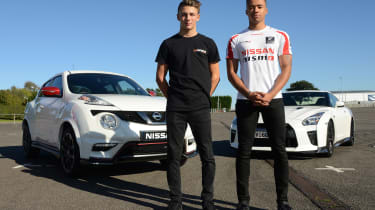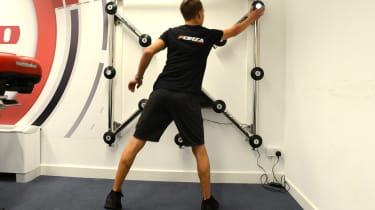How to become a racing driver
We visit Nissan's NISMO Lab with karting ace Kiern Jewiss and Nissan GT Academy star Jann Mardenborough to learn the ropes
What does it take to become a racing driver? Is it pure intuition? Is it a mixture of dedication, attitude and perception? Or does practice simply make perfect?
To find out, we meet 14-year-old karting ace Kiern Jewiss at Nissan’s NISMO Lab test facility at Silverstone, Northants. Joining us is GT Academy star Jann Mardenborough, whose unconventional path to motor racing (from computer games) offers a different perspective to many of today’s top drivers.
• Best performance cars to buy now
We meet early on Monday morning, hours after Kiern has flown in from Italy, where he’s just come sixth in the WSK Series final, having battled a rib injury all weekend. But Kiern’s success is wide ranging; he’s already won 195 trophies and five British karting titles. “I was eight years old when I first got in a kart,” he tells us. “I knew then that this is what I wanted to do for the rest of my life. Formula One is the goal.”
So he has the talent and ambition. But what else do you need? The day was set up to give Kiern a look at all the aspects required to make it at the top. First up we sit down with Chris Gooder of Chimp Management to get an understanding of the kind of mindset needed to make it in professional sport. “The emotional side of our brain is five times stronger than the logical and rational side,” says Gooder.
“When you try to engage your logical brain, your chimp often wins.” According to Gooder, your “chimp” is the devil on your shoulder that stops you thinking sensibly in stressful situations. Sports people have to work to control their emotions when competing. “You need to perform under pressure and recover from mistakes,” he adds. “Everybody is wired to worry about certain things.”
How about physical fitness? Do strong aerobic and anaerobic capacities make a racer? Dan Williams from Pro Performance sits Kiern on a Wattbike, which measures 49 parameters 100 times a second. It’s infinitely adjustable to assess strength and fitness. “We work on the drivers’ physical fitness to improve their performance on track,” says Williams. “Races are more demanding and the drivers are travelling all over the world. Fitness is really important.”
Kiern soon works up a sweat – no surprise, as riding a Wattbike can feel like cycling through concrete. Williams also asks him to perform a BATAK test [rapidly changing lights on a wall] to assess his reactions. It’s another area Kiern seems keen to nail, emphasising his commitment.
• Best track day cars to buy now
Later, Kiern is shown the ropes in NISMO’s simulator – allowing him a quick lap of the Silverstone GP track. He takes to it like a duck to water; his accuracy is astounding. But before he’s let loose in a GT-R, he’s given the keys to Nissan’s Juke Nismo RS. Any fears of clumsy clutch control are quickly allayed. GT Academy chief instructor Rob Jenkinson has seen enough, as he gets the mechanics to switch the rear wheels to low-grip tyres.
One spin around some tight cones is all it takes for Kiern to get the hang of things. His throttle application is progressive, and the odd dab on the brakes slows the car gently. Jann is sitting next to Kiern and suggests he tries drifting and sliding on his next run. Things culminate with a run in the GT-R. Nothing phases him, with Kiern ensuring pedal is glued to metal from the outset.
Jenkinson sums up his performance, saying: “When you introduce a 14-year-old to some challenging activities you don’t expect too much, but he’s exceeded expectations. He’s got a very bright future.”
Now read the review of the new 2017 Nissan GT-R...
Find a car with the experts









